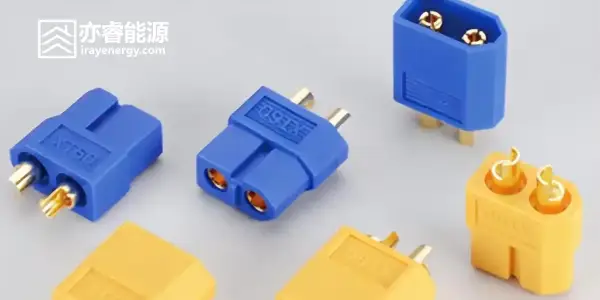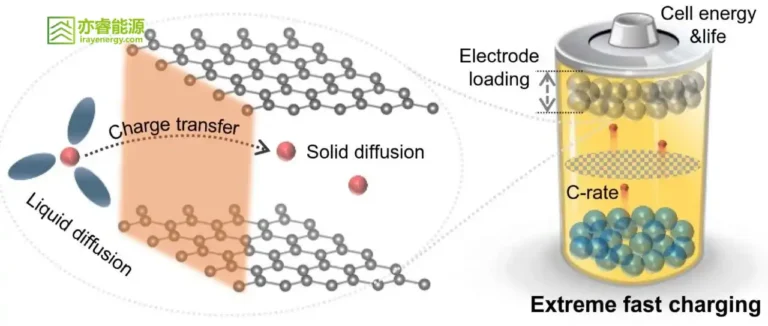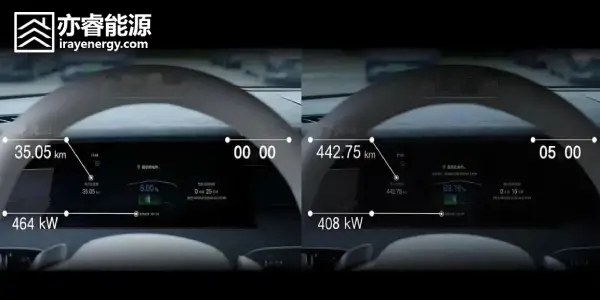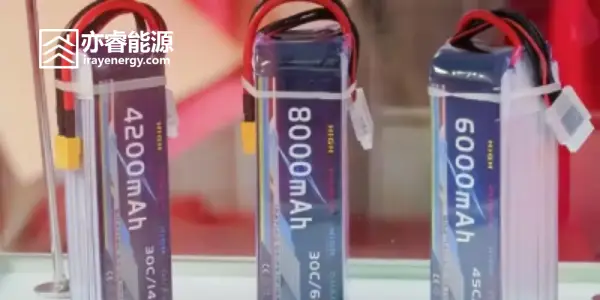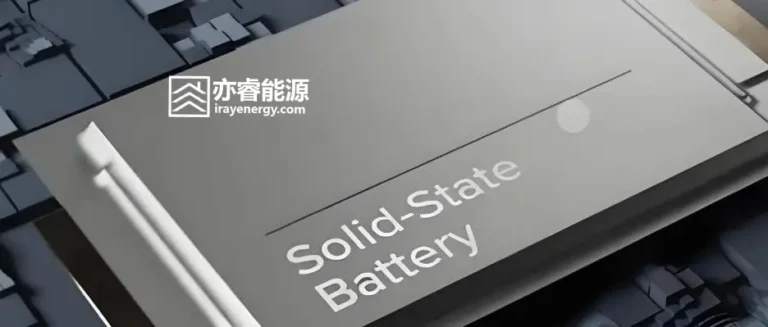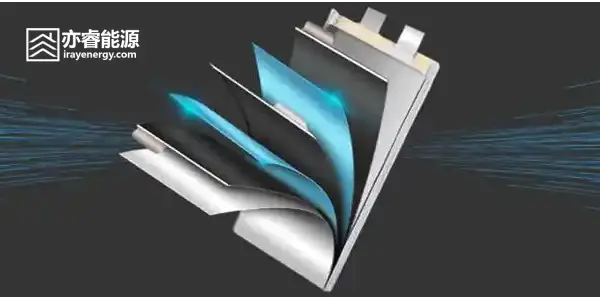Drone Battery|Comprehensive Guide to Abnormal States, Usage, Storage, and Maintenance
With the widespread application of drones, the battery, as the core power source, plays a decisive role in the safety, service life, and overall performance of drones. Gaining an in-depth understanding of the abnormal states of drone batteries, the correct usage and storage methods, as well as effective maintenance measures, not only ensures efficient drone operation and extends battery lifespan, but also reflects a strong commitment to environmental protection and safety, contributing to the sustainable development of the drone industry. In this article, IRAY ENERGY will provide you with a complete guide to the use, storage, and maintenance of drone batteries.
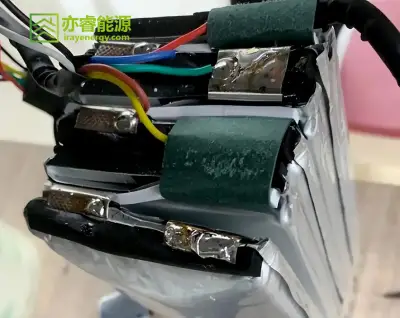
irayenergy Drone Battery Pack Detailed Display
1. Abnormal States of Drone Batteries and Response Strategies
1.1 Overcharge
Definition and Risks
Overcharge refers to a condition where, during charging, the voltage or current exceeds the safe range the battery can handle. This leads to excessive heat generation, accelerates the aging and decomposition of battery materials, reduces capacity, and significantly shortens lifespan. More severely, overcharging may cause swelling, leakage, or even explosions, posing major safety risks to users’ lives and property.
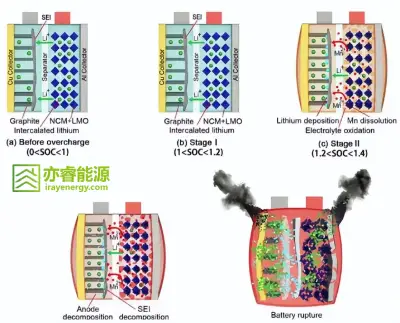
Battery Overcharge Mechanism Demonstration Diagram
Causes of Overcharge
A faulty charger is one of the most common causes of overcharge. For example, if the voltage detection circuit inside the charger fails, it cannot correctly identify the battery voltage, and may continuously output excessive voltage. Using an incompatible charger, where the output voltage exceeds the rated voltage of the battery, also easily results in overcharge. Additionally, if the Battery Management System (BMS) malfunctions and fails to monitor or regulate the charging process, overcharge may also occur.
Symptoms and Preventive Measures
During overcharge, the battery may heat up significantly, with surface temperature rising sharply, and swelling may occur. To prevent overcharge, it is critical to use a high-quality, compatible charger, and regularly check the charger and BMS performance. Avoid leaving batteries charging unattended for long periods, and monitor battery status during charging. If abnormalities are detected, charging should be stopped immediately.
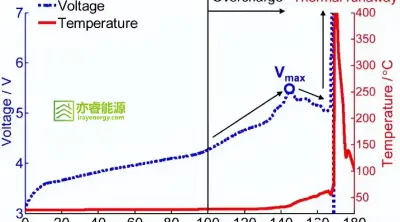
Battery Overcharge Surface Temperature Curve
1.2 Over-discharge
Definition and Risks
Over-discharge occurs when the battery voltage drops below the manufacturer’s specified minimum discharge voltage. This damages the structure of the cathode material, harms the Solid Electrolyte Interphase (SEI) layer on the anode surface, increases internal resistance, reduces capacity, and shortens cycle life. Severe over-discharge may even render the battery unchargeable, leading to permanent failure.

Battery Over-discharge Electrode Interface Display
Causes of Over-discharge
The primary cause of over-discharge is failing to land the drone for charging in time, resulting in complete depletion of battery power. For example, due to operator error or environmental interference, the drone may continue flying until the battery is drained. A malfunctioning BMS that fails to monitor voltage accurately and issue low-voltage warnings can also result in over-discharge.
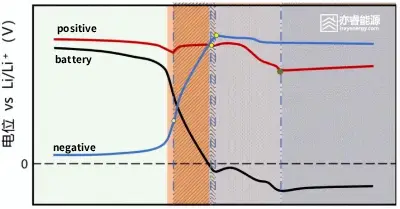
Battery Over-discharge Voltage Illustration
Symptoms and Preventive Measures
When over-discharge occurs, drones may suddenly lose power or become unstable in flight, with battery voltage dropping below the normal range. To prevent over-discharge, ensure sufficient battery charge before flights, plan flight duration wisely, and avoid exhausting the battery. Regularly check BMS functionality to ensure it properly monitors voltage and protects the battery.
1.3 Thermal Runaway
Definition and Risks
Thermal runaway is a condition where internal heat accumulation triggers self-heating, self-accelerating chemical reactions, causing the battery temperature to rise uncontrollably. Once it occurs, it is difficult to control, leading to increased internal pressure, swelling, rupture, fire, or explosion. In densely populated areas, thermal runaway may cause the drone to crash suddenly, start fires, and endanger surrounding people and property.
Causes of Thermal Runaway
Internal short circuits—caused by defects such as separator damage or manufacturing flaws—are common triggers. Overcharge and over-discharge generate heat that accelerates runaway reactions. Poor heat dissipation, high-temperature environments, or batteries with poor thermal stability also increase risk. For example, in hot summer conditions, long flights under direct sunlight without proper cooling can easily induce thermal runaway.
Symptoms and Preventive Measures
Before thermal runaway, the battery usually exhibits abnormal heating and rapid temperature rise, with possible voltage fluctuations. To prevent this, choose reliable, thermally stable batteries, avoid overcharge and over-discharge, and regularly check the battery’s appearance and connections for short-circuit risks. Equipping drones with heat dissipation solutions (e.g., heatsinks, fans) helps reduce risks. Avoid long operations in high-temperature conditions; if the battery overheats, stop usage and cool it immediately.
1.4 Other Abnormal States
Battery Swelling
Swelling is caused by gas generation inside the cell due to overcharge, over-discharge, or high-temperature usage, leading to bulging. This reduces performance, may cause short circuits, and poses safety hazards. Swollen batteries should be discontinued immediately.
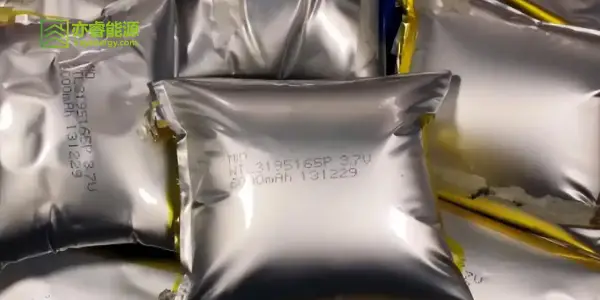
Swollen Battery
- Electrolyte Leakage
Leakage may result from damaged casing, poor sealing, or excessive internal pressure. Since electrolyte is corrosive, it may damage drone components and degrade performance. If leakage occurs, handle carefully to avoid skin/eye contact and replace the battery promptly.
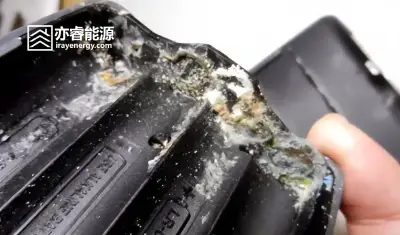
Battery Electrolyte Corrosion on Casing Illustration
- Short Circuit
Short circuits occur when insulation between positive and negative terminals is damaged (e.g., wire wear, internal defects). This generates large currents, severe heating, potential damage, or fires. To prevent this, protect wiring from abrasion, ensure proper connections, and avoid foreign objects entering the battery compartment.
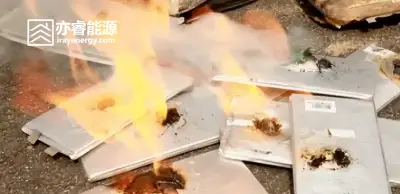
Battery Needle Puncture Combustion Illustration
2. Correct Usage and Storage Methods
2.1 Usage Methods
Proper Charging and Discharging
Always use a charger compatible with the battery and follow instructions strictly. Inspect the battery for damage before charging. Avoid charging in high-temperature environments, and do not exceed rated current and voltage. During discharge, avoid over-discharge; land promptly when low-battery warnings appear. Never attempt takeoff when the battery is critically low.
Routine Inspections
Check batteries regularly for swelling, deformation, cracks, or leakage. Inspect wires for wear, and ensure connectors are intact. Use the BMS or charger to monitor parameters like voltage and internal resistance to assess health. Replace defective batteries promptly.
Environmental Considerations
Avoid using drones in extreme conditions (heat, humidity, dust). High temperatures shorten lifespan, moisture can cause short circuits, and dust may damage connectors. In cold weather, pre-warm batteries to maintain performance.
2.2 Storage Methods
Long-Term Storage
For long-term storage, charge batteries to about 50% capacity. Remove from the drone, place in a storage case, and keep in a cool, dry, ventilated environment away from sunlight. Recharge/discharge every 1–2 months to maintain activity.
Transport Precautions
Individually package batteries to avoid contact with metal or conductive objects. Use compliant packaging (e.g., anti-static bags, foam) and follow transport regulations. Air transport of lithium batteries is strictly regulated by capacity and type.
Temperature and Humidity Control
Ideal storage temperature is 15–25℃ with humidity between 40%–60%. Excessive heat accelerates aging, while extreme cold reduces performance. High humidity may cause rust or mold. Use a monitoring device to control environmental conditions.
Regular Checks and Cleaning
Inspect appearance, connectors, and wires periodically. Clean surface dust with a soft cloth, avoiding corrosive cleaners. Use anhydrous alcohol to wipe connectors to remove oxidation and ensure conductivity.
Cycling Use
Avoid frequent deep charge-discharge cycles; shallow cycles extend lifespan. Balance cell usage within packs to avoid overuse of individual cells.
Disposal of Used Batteries
Since old batteries contain harmful substances, do not discard them randomly. Dispose of them through certified recycling points. Prevent short circuits and leakage during handling to avoid environmental pollution.
Through a comprehensive understanding of drone batteries—including types, structures, supporting devices, abnormal states, and correct usage and storage practices—we can ensure safe, efficient, and reliable performance. This not only extends battery lifespan and ensures stable drone operation across industries but also represents a responsible attitude toward safety and the environment, promoting sustainable growth of the drone industry.

